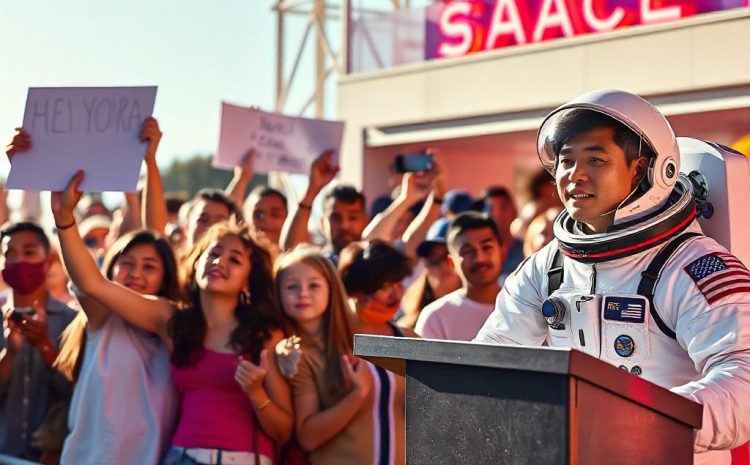
Commercial Space Travel Available
Yes, commercial space travel is available today, marking a new era where civilians, not just astronauts, can experience space firsthand. Through the efforts of pioneering companies like SpaceX, Blue Origin, and Virgin Galactic, civilian space travel has transitioned from science fiction to reality. Here’s a look at the current landscape of commercial space travel, including what’s available, how it works, and where it might be heading.
1. Current Commercial Space Travel Options
Affiliate Insurance Itinerary Plan – Your All-Inclusive Travel Plan:
- Suborbital Flights
The most accessible form of space travel right now is the suborbital flight. Companies like Virgin Galactic and Blue Origin offer these flights, which reach the edge of space before returning to Earth. During these flights, passengers experience a few minutes of weightlessness and can see the curvature of Earth.- Virgin Galactic: Virgin Galactic’s SpaceShipTwo has begun offering suborbital flights, allowing passengers to experience about four minutes of weightlessness and a view of Earth from space. Tickets are priced around $450,000 per person, and flights typically last about 90 minutes.
- Blue Origin: Blue Origin’s New Shepard also offers suborbital flights, which take passengers over the Kármán line (the boundary of space at about 100 kilometers above Earth). Passengers experience similar weightlessness and views for around $250,000 per ticket.
- Orbital Flights
For those interested in a longer, more immersive space experience, orbital flights offer the chance to orbit Earth for several days. This type of space travel is still in the early stages but is available through private partnerships.- SpaceX: SpaceX has entered the commercial space tourism market with its Crew Dragon spacecraft, which can carry civilians into low Earth orbit for multi-day missions. SpaceX’s Inspiration4 mission in 2021 marked the first all-civilian orbital mission, and more missions are planned for the future. Prices for orbital flights are higher than suborbital flights, running tens of millions per seat, but as technology advances, the cost may eventually decrease.
- Space Station Visits
Some companies are working to make visits to space stations a reality. Although these experiences are currently more exclusive and expensive, they offer the most extended experience in space for civilian travelers.- Axiom Space: In partnership with SpaceX, Axiom Space plans to send private passengers to the International Space Station (ISS). Axiom also intends to launch its own commercial space station in the coming years, providing a dedicated destination for civilian and commercial missions.
2. Who Can Fly?
While space tourism companies initially focused on high-profile, well-financed individuals, they are gradually expanding access. Passengers typically need to meet basic health requirements but no longer need the rigorous training required of professional astronauts. Companies are committed to ensuring that most civilians, regardless of background, can participate if they meet minimum health and safety standards.
3. Space Travel Experience
During a commercial space flight, travelers can expect:
- Pre-Flight Training: Passengers receive essential training, which usually lasts a few days, on handling microgravity, using safety equipment, and understanding flight operations.
- Launch: Travelers experience the intense power of a space launch, which takes them to the boundary of space within minutes.
- Weightlessness: Once they reach space, passengers experience several minutes of weightlessness, allowing them to float freely.
- Spectacular Views: From the window, travelers get an unparalleled view of Earth against the backdrop of space, including the curvature of the planet and possibly even the thin blue line of the atmosphere.
- Return and Landing: After experiencing weightlessness, the spacecraft re-enters the atmosphere, descending back to Earth for a safe landing.
4. Challenges in Expanding Commercial Space Travel
Although space travel is available, several factors still limit its accessibility:
- Cost: While prices have dropped somewhat, commercial space travel remains prohibitively expensive for most people, with tickets ranging from hundreds of thousands to millions of dollars.
- Regulation and Safety: Commercial spaceflight companies operate under stringent safety regulations. As more companies enter the market, regulators work to ensure safety without stifling innovation.
- Environmental Concerns: Frequent launches may have environmental impacts, leading companies to explore cleaner fuel options and sustainable practices.
5. The Future of Commercial Space Travel
The future holds promise for commercial space travel, with goals of increasing accessibility and affordability. Key developments include:
- Reusable Rocket Technology: Advances in reusability, championed by companies like SpaceX, have significantly lowered launch costs. This technology could continue to drive prices down, making space more accessible.
- Space Hotels: Several companies, including Orbital Assembly and Axiom Space, are working on building space hotels, which could eventually allow tourists to stay in space for extended periods. The development of space stations solely for tourism could open new opportunities.
- Point-to-Point Space Travel: SpaceX and other companies envision using rockets for rapid travel between points on Earth, offering a potential new mode of ultra-fast transportation.

